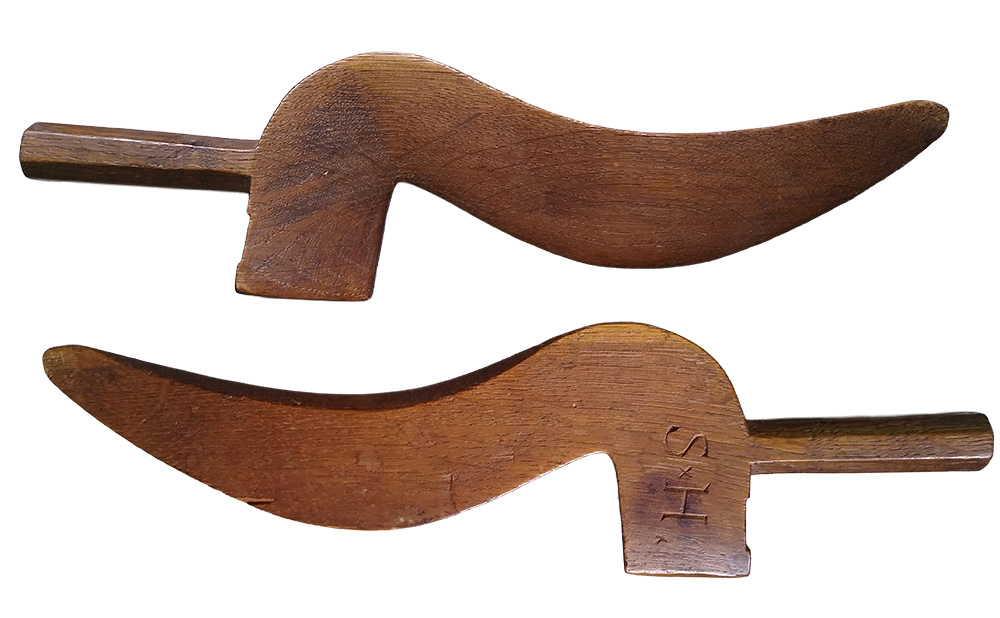Kerfies, Cleggies and all that.
 Hurst Families and Lead Mining in Swaledale.
Hurst Families and Lead Mining in Swaledale.
Hurst seems to be the collective name used for a sprawling group of farms and hamlets on the high ground north of Marrick.
Bulmer's Directory describes Hurst: "Hurst is a scattered village about half a mile in length, and distant four miles of Marrick. It contains a small Wesleyan chapel and a Board school. The inhabitants are chiefly employed in lead mining and smelting . The works are the property of the lord of the manor, from whom they are leased by the Yorkshire Lead Mining Co., Limited. The mines are worked by two shafts 50 fathoms deep, but are not so productive now as formerly. The present output is about 100 tons of ore per month. Lead was wrought here at a very early period. In the British Museum is a large pig of lead, bearing the name of the Roman emperor Hadrian, which was found here; and, about ten years ago, a wooden spade, belonging to the same period, was discovered in one of the old workings. This is now in the museum at Richmond."
There are veins of lead ore running all over this area. Plans and section maps show a labyrinth of levels and shafts that run under these moors, some named after our ancestors and their families.
I've always felt a link with Hurst, even before I started researching the place and our family who lived there. You find yourself visualising what it looked like two hundred years ago, and how those people lived; a bit like visiting an old castle or stately home, but on a bigger scale and with far more connection.
The population is much reduced from the height of the lead mining era and consequently, some of the farms and buildings have long since gone. It's an interesting challenge to do the detective work to try and establish where some of them stood, and also to visit the sites and think of the people who called these places home. As my research has progressed, I've found most of the buildings in Hurst have been home to some distant relation either by blood or marriage.
Places around Hurst
- Garth Head
- Garth House
- The Green Dragon or Washfold Inn
- Greenhurst or Greenas
- Hurst Hall
- Hurst Head House
- Ing Head
- Lane Head
- Level Houses
- Roan
- Slack Hills
- The Queens Level
How the mining families lived
This was a close-knit community. Research shows that many of the people in the village were related to each other in some way and the same family names crop up again and again.
Many families had lived in Hurst for generations since at least the 1600s. All tended to be lead miners but families supplemented their living with some farming. The whole family got involved with lead production. Women and children would have been busy washing, sorting and dressing the mined ore whilst also keeping up with household chores. Their diet was rather monotonous. The food would be filling and plentiful but wouldn't have much variety, mostly potatoes and bread.
The houses in Hurst were said to be better than average, but small. The whole family probably sleep in the same room.
Some extra money was also made by knitting. Both men and women did this in a way peculiar to the Yorkshire Dales using a knitting stick or sheath. One of the needles is put in the knitting stick and then the stick is secured in the belt or waistband. This leaves the right hand free to manipulate the yarn and the left to use the other needle. Thus you can still knit while walking to work, fetching water or feeding the chickens! The knitting stick pictured has the initials S.H. carved in it and was passed down. S.H. could be Sarah Hillary, my great grandmother's sister.

Our family connection
The last person in the family to be born in Hurst was my great grandmother, Elizabeth Hillary. She moved away around 1890 when the mines finally closed and settled in Richmond. Her illegitimate daughter lived at Garth Head until about 1930. Branches of Elizabeth's family had been living in Hurst since at least the 1600s.
A background to lead mining in Hurst
The lives of these families, I find fascinating: how they would have lived, their industry and how they shaped the landscape. Rather than explain all about lead mining, here are some links to explore.
The Northern Mine Research Society
The Northern Mine Research Society have so much information and research available. Much of it is online and free to non-members but I joined anyway to lend support.
- Mines of Wensleydale and Swaledale. An accessible history and description of lead mining in the northern dales.
- The lead miners of Swaledale and Arkengarthdale in 1851. A snapshot of the mining industry in 1851. It gives an insight into the daily life of the people.
- The Hurst Mining Field. Another of the 'Memoirs' papers, this one goes into more detail about the Hurst mines.
- Glossary of Technical Terms. This helps to make sense of some of the papers.
Links to other articles
- Buddle Pit Mine Database. Has maps showing locations, names and dates of shafts and levels. Also links to old section plans.
- Orewinners and Deadmen: Lead Mining in Swaledale
- Lead Mining in the Yorkshire Dales
- Life in the Lead Mines. This article by Arthur Raistrick gives a very good picture of lead mining life. I have a booklet by him if any family member wants to read it.